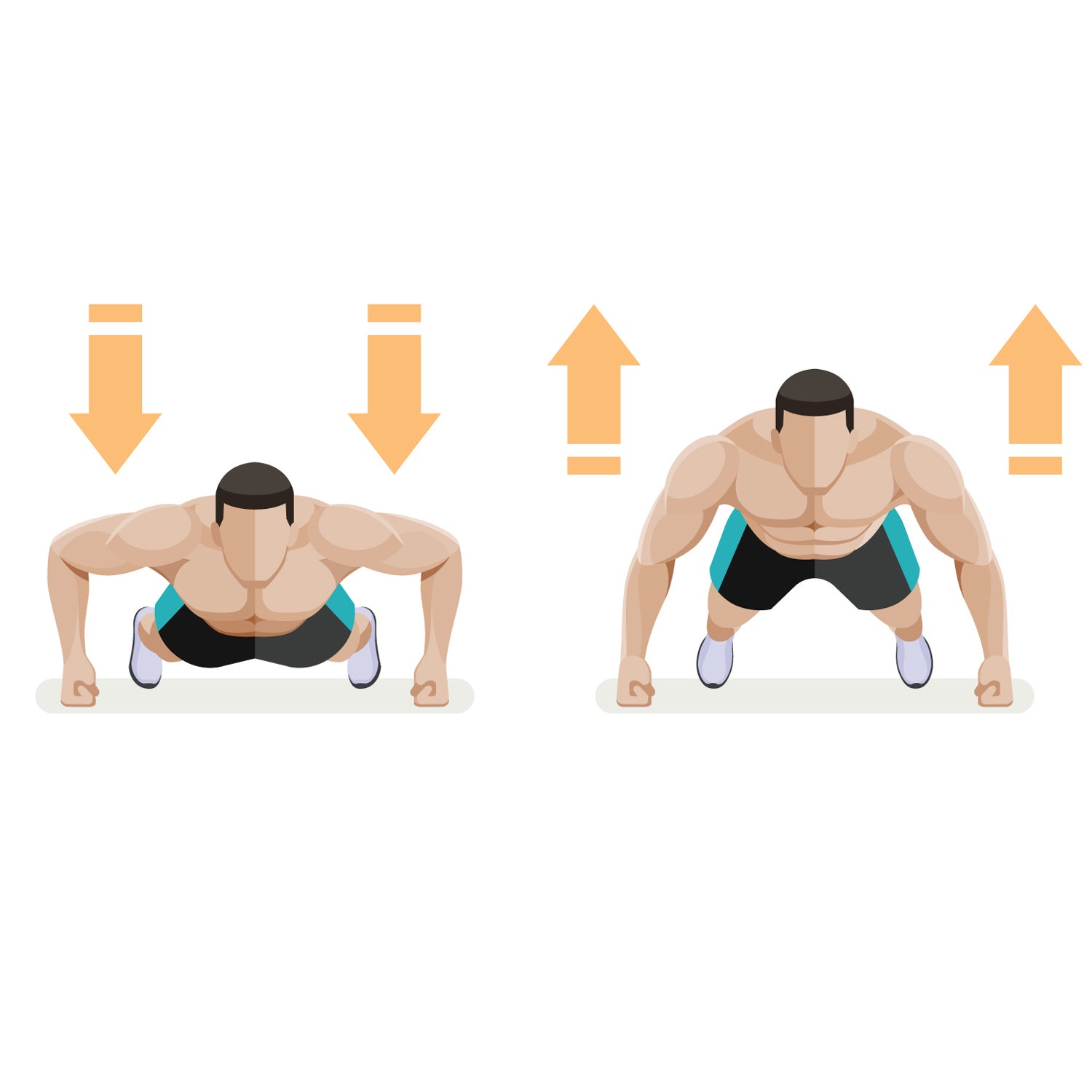You’ll be hard-pressed to find an athlete who has never performed a push-up. Performing it correctly, though? That’s another matter entirely. No matter how simple the push-up might look, it’s actually a very complicated, technical movement, says , a New Jersey–based trainer and Spartan SGX coach. Even the most advanced athletes make egregious errors when performing a push-up, negating some of its benefits.
“The push-up is an excellent bodyweight movement for building upper-body endurance—primarily in the chest and shoulders,” says Barroso. “But it’s also crucial for core strength and teaching those muscles to work under fatigue—a must for anyone in an endurance sport”
Barroso recommends athletes perform push-ups between periods of running, biking, swimming, or other endurance activities. By combining aerobic stints with anaerobic-based push-ups, you stand to improve both your lactic and pain thresholds, meaning you can fight fatigue better whenever you want to perform.
Another option: combining push-ups into your regular strength routines. Push-ups—like other large compound movements, including lunges, pull-ups, deadlifts, and squats—make for great total-body circuits. Looping them together, one right after the other, hones your muscular endurance while improving cardiovascular power.
Here, Barroso explains the nitty-gritty of proper push-up technique and suggests three push-up variations for next-level results.
The Basics
The Conventional Push-Up
How to Do It: Get on the floor on all fours, and place your hands shoulder-width apart so your shoulders, elbows, and hands are stacked. Step both feet back behind you, hip-width apart, so that your body forms a straight line from head to heels, similar to a plank position. Your head should face down just slightly above the tips of your fingers. Squeeze your glutes and core as tight as possible. Then, to fire up your back muscles, think about rotating both of your hands out and away from your chest and shifting your shoulders down from your ears. You should feel your shoulder blades pin down and back, as if they were squeezing an orange. You want to maintain this shoulder position throughout the entire exercise.
From here, inhale deeply and slowly lower your body in one straight line toward the floor. As you do so, allow your elbows to flare out roughly 45 degrees from your body, not straight out to the side or completely tucked into your sides. When your chest just barely touches the floor, pause, then forcefully exhale and press through your hands to return your body to the starting position.
For a More Stable Core
The Rotational Pushup
puts the core muscles—especially the obliques—under increased tension, making it a challenging addition to any core workout.
How to Do It: Start in a conventional push-up position, then lower as you would normally. As you push back up to the starting position, raise one hand off the floor and, extending it up toward the ceiling, rotate your torso until your chest is perpendicular with the floor and your body forms a “T” shape. Rotate your torso to lower your hand back to the floor, perform another push-up, and repeat the arm lift on the opposite side.
For Explosive Strength
The Depth Push-Up
, the depth push-up increases the upper body’s ability to activate fast-twitch muscle fibers. That’s vital to powering the last leg of any race.
How to Do It: Get into push-up position, but with your hands on top of a medicine ball, slightly closer than shoulder-width apart. Quickly remove both bands from the ball, landing on the floor with a gentle bend in your elbow, your hands slightly wider than shoulder-width apart, and your chest just barely touching the ball. After you land, push through your hands to extend your arms straight and place both hands back on top of the ball.
For Stronger Triceps
The Triceps Push-Up
A takes the focus off of the chest and onto the triceps.
How to Do It: Lower into a conventional push-up, but tuck your elbows against the sides of your torso. Press through your hands and extend your triceps to raise back up to start.


